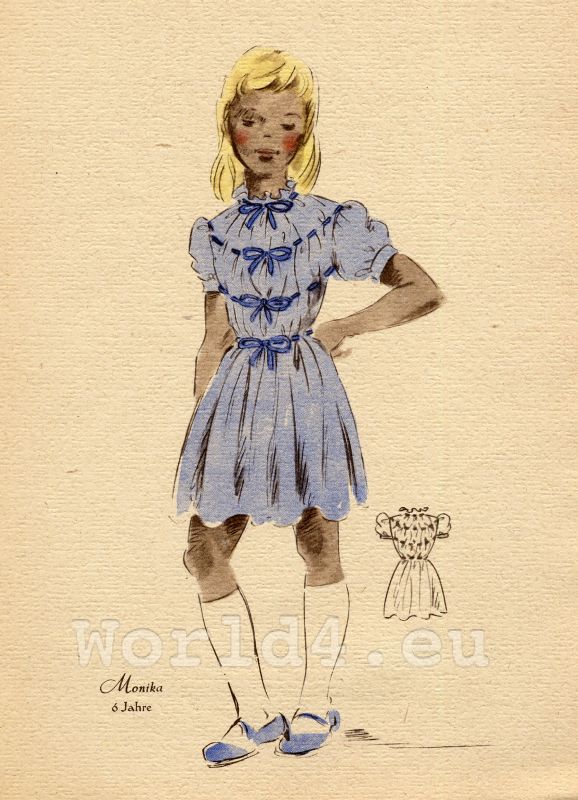The town Kaštela lies on the coast of Central Dalmatia between Trogir and Split.
Category: Genre
A woman from Sinj (Signo), Croatia. The Serbs in the Adriatic.
The Serbs in the Adriatic. Their types and costumes 1870-1878.
Young men from Split, Croatia 1870. The Serbs in the Adriatic.
Young men from Split in traditional clothing, Croatia 1870. The Serbs in the Adriatic. Their types and costumes. Published 1870-1878. Brockhaus Leipzig Germany.
Girl in red hooded raincoat. German children clothing 1940s.
Girl in red hooded raincoat. Vintage children costume. German Girls dress 1940s. Costume drawing. Gallery: German Child and Teen costumes in 1940s
Young girl in red dress with puff sleeves.
Young girl in red dress with puff sleeves Vintage children costumes. German Girls dress 1940s. Costume drawing. Gallery: German Child and Teen costumes in 1940s
Girl in dress with sewn pockets.
Girl in dress with sewn pockets. Vintage children costumes. German Girls dress 1940s. Costume drawing. Gallery: German Child and Teen costumes in 1940s
German Girls fashion with skirt and Bolero jacket.
German Girls fashion with skirt and Bolero jacket. Costume drawing, fashion plate of girls dresses from 1941. Gallery: German children fashion, 1940s.
Knee-length Fitted Blouse dress with short puffed sleeves
Knee-length Fitted Blouse dress with short puffed sleeves. Fashion hair with ribbons Costume drawing, German vintage fashion plate of girls dresses from 1941. Gallery: German children fashion, 1940s.
German Girls clothing 1940s. Jutta 8 years old.
German Girls clothing 1940s. Costume drawing.
Blue summer dress with ribbons. German Girls clothing 1940s.
Blue summer dress with ribbons. German Girls clothing 1940s. Vintage children costumes. Costume drawing. Gallery: German Child and Teen costumes in 1940s










